The Mythology of Irish Rivers and Their Deities: An Insight into Celtic Water Lore
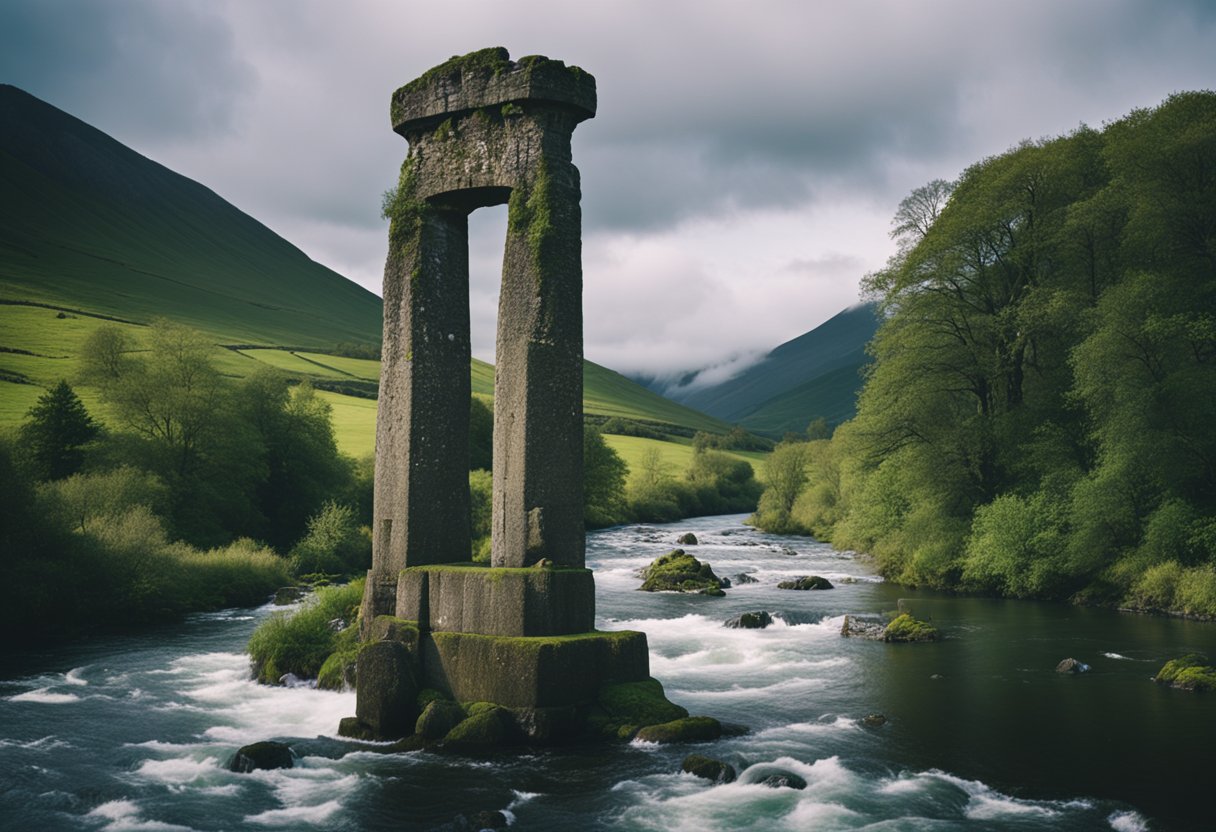
Updated On: April 23, 2024 by Maha Yassin
The mythology of Irish rivers and their deities weaves a fascinating tapestry of stories that reflect the deep spiritual connection the Celts had with the natural world. The lore surrounding Ireland’s waterways stretches back centuries, offering glimpses into a time when rivers were more than just sources of water—they were sacred entities, home to gods, and central to the spirituality of the Irish people. These majestic watercourses were personified and revered through myths and legends, and their stories have been passed down through generations.
Among the many tales of Irish mythology, rivers hold a special place as the abode of divine beings and as the setting for epic narratives. In particular, the estuary of the River Shannon carries its unique myths. Its waters are said to be eternally linked to the goddess Sinann, associated with knowledge and inspiration. The rivers of Ireland, like the goddess of the Shannon, hold stories of mystical creatures, heroic battles, and otherworldly realms. The deities that inhabit these waters often represent sovereignty and power, demonstrating the significance of rivers in the cultural and political life of ancient Ireland.
The Roots of Irish Mythology
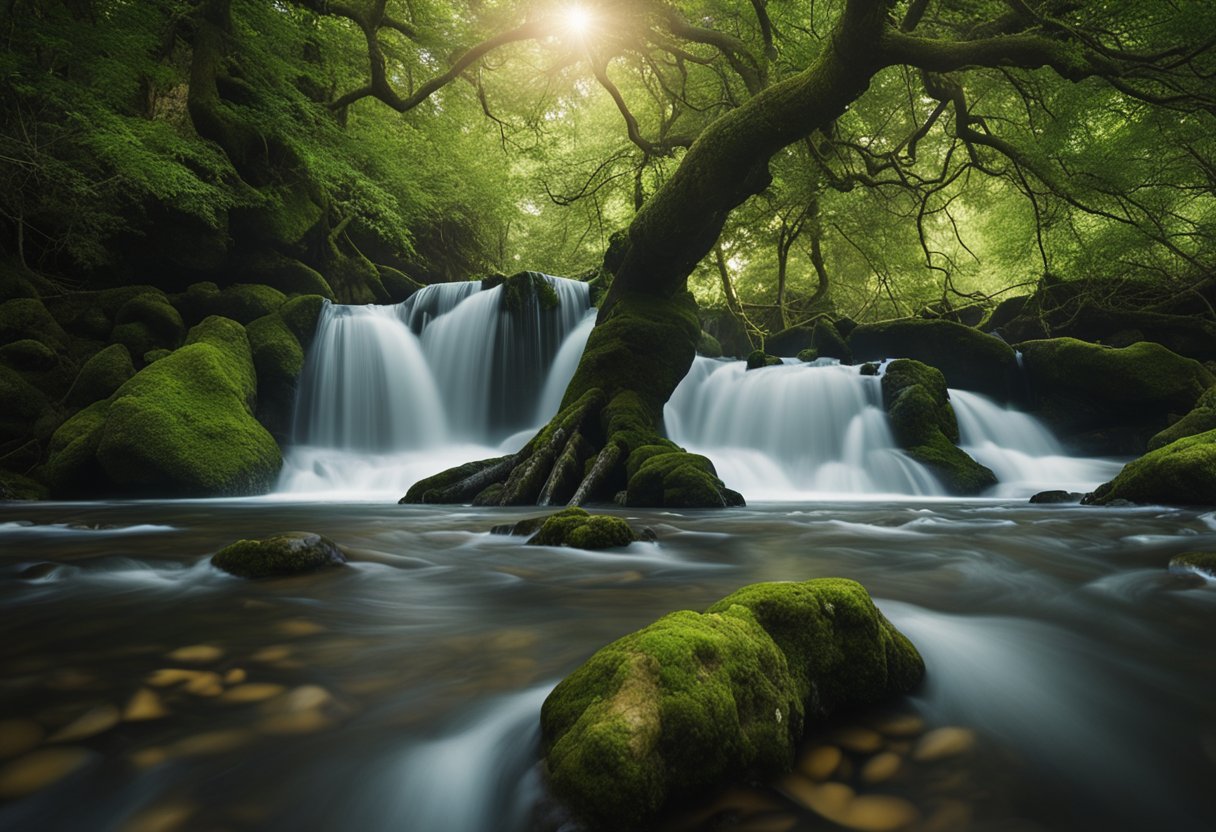
In the tapestry of Irish mythology, the warp of Celtic belief intertwines with the woof of Christian influence, creating a storied heritage as intricate and flowing as the rivers that vein the Emerald Isle.
Celtic Beliefs and Oral Tradition
Before the written word solidified history, Ireland’s culture was elegantly orated through oral tradition. Celtic mythology, a prominent branch of the island’s heritage, thrived in an environment sustained by the spoken lore of the Celts. These pre-Christian narratives were not merely tales of fancy but served as a cultural adhesive for Ireland’s society, instructing through legendary figures and epic sagas. Our lands are home to tales of rivers like the Boyne, personified and deified, reflecting the Celt’s deep connection with nature and the sacredness they attributed to these life-giving waterways.
The intersection of Christianity and Paganism
The arrival of Christianity in Ireland marked a pivotal point in the narrative of our island’s spiritual identity. As Christian monks began to transcribe the ancient oral traditions, they did so through the lens of their faith, merging paganism with their biblical worldview. The history of Ireland’s religious culture becomes a palimpsest, with segments of pre-Christian beliefs shining through the overlay of Christian doctrine. This confluence is evident in the survival of river deities in Irish folklore, as the early Christian scribes often preserved or adapted older myths to fit the new religious paradigm.
Our river deities once worshipped for their power and might, now flow through our tales, embodying the resilience and continuity of our Irish heritage.
The Mythology of Irish Rivers
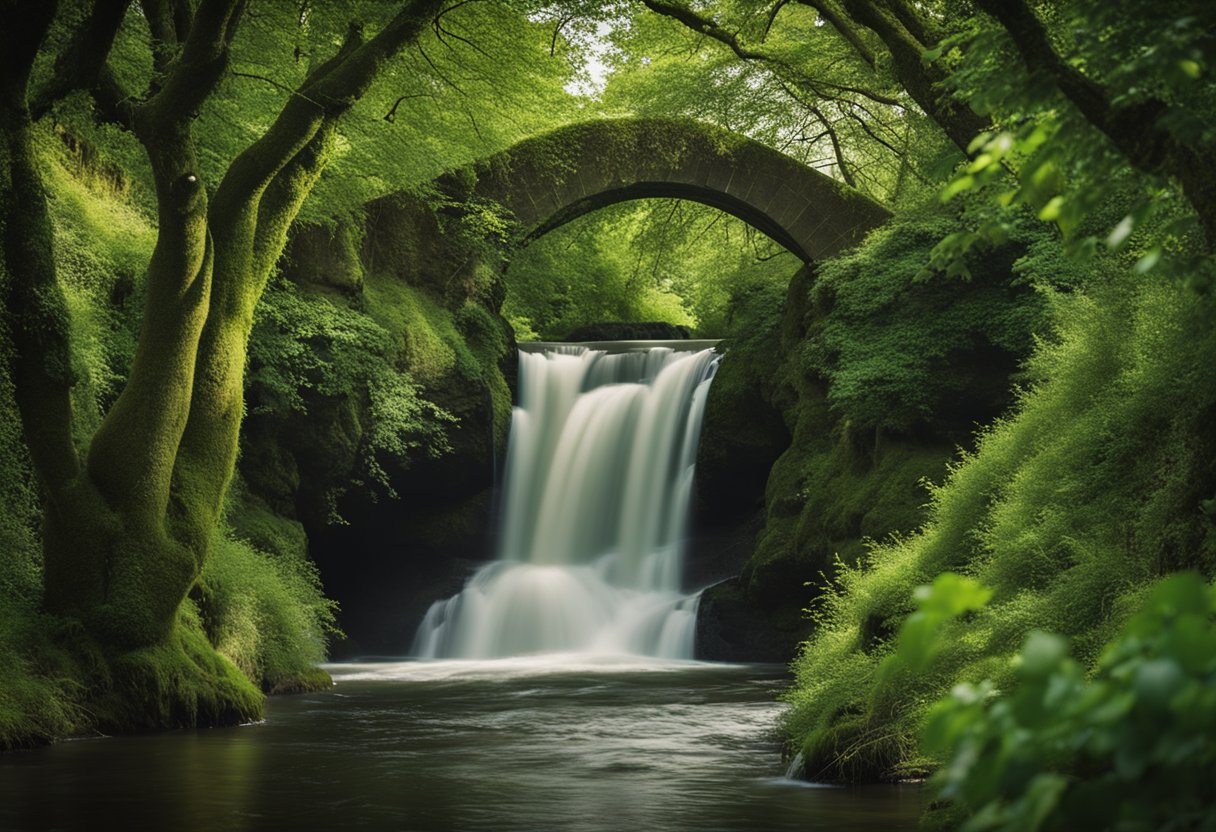
In the rich tapestry of Irish mythology, rivers are not merely bodies of water but are considered embodiments of divine spirits. The following subsections explore the revered rivers of Ireland and the deities that are said to inhabit them.
The River Boyne and Goddess Boann
The River Boyne, flowing through the ancient lands of Leinster and into the Irish Sea, is more than a geographic feature; it is intrinsically linked to the goddess Boann. She is a figure of immense importance, associated with wisdom and fertility in the natural world. According to myth, Boann challenged the enchanted well of wisdom, which led to the creation of the Boyne and, subsequently, to her transformation into the river itself—an act that intertwines her with the river and all its spiritual significance.
River Shannon and Goddess Sionann
Similarly, the River Shannon, the longest river in Ireland, is bound to the deity Sionann. It is believed that in her pursuit of profound enlightenment from the same well of knowledge that led to Boann’s apotheosis, Sionann, too, was swept away by the resulting waters. Her spirit is forever encapsulated in the life-giving flow of the Shannon, shaping the land and enriching the Irish countryside. Articulating the interdependence of rivers, sea, and land, Sionann’s story encapsulates the reverence of nature central to Celtic belief.
Deities of Water and Sovereignty

In the mythology of Ireland, water bodies and sovereignty are closely intertwined, with various deities embodying the essence of both. Let’s explore these figures of fertility and dominion.
Danu, Anu, and the Earth’s Fertility
Danu, also known as Anu, is often considered the mother goddess of Irish mythology. As a symbol of the earth’s fertility, she is associated with prosperity, abundance, and the nurturing of life. Her presence permeates the lore of the land, bestowing fertility upon the fields and the people. Ancient texts echo her importance, recounting how the Tuatha Dé Danann, the “People of Danu”, draw their name from this maternal figure, signifying her pivotal role in the pantheon of Irish deities.
Lir, Manannán Mac Lir, and Sea Dominion
Within the watery depths of Irish lore, Lir emerges as a potent figure, often synonymous with the sea itself. His influence extends across lakes and oceans, embodying water’s limitless and sometimes tempestuous nature. His son, Manannán Mac Lir, carries forward this maritime sovereignty. Manannán is celebrated as a guardian of the Otherworld and a deity who commands the waves, a reputed master of seamanship and navigation. Their might and control are as vast as the waters they rule, encapsulating the primal power and sovereignty of the sea.
Fierce Warriors and Epic Battles
As we delve into the mythology of Irish rivers, we encounter tales of formidable warriors and monumental conflicts that have shaped the mythical landscape of Ireland.
The Ulster Cycle and Hero Cú Chulainn
- Ulster Cycle: Noteworthy for its rich narratives of heroism and strife.
- Cú Chulainn: The epitome of the hero, renowned for his superhuman prowess.
The Ulster Cycle, one of the four great cycles of Irish mythology, brims with stories of valiant heroes and their epic confrontations. Foremost among these heroes is Cú Chulainn, whose deeds by the rivers of Ulster are legendary. Notably, the River Dee in County Louth is said to be where this famed warrior single-handedly fended off the armies of Queen Medb in the notorious Táin Bó Cúailnge (The Cattle Raid of Cooley).
Cú Chulainn’s link to riverine sites underscores the intertwining of physical geography and myth, where battles were often fought and heroes made their indelible marks. His story is emblematic of the Ulster Cycle’s focus on warrior culture, detailing feuds, rites of passage, and the intrinsic ties to the land and waterways of Ireland.
Fomorians and the Mythological Cycle
- Mythological Cycle: Chronicles the earliest invasions and the supernatural beings that dominated Ireland.
- Fomorians: A mythical race portrayed as dark and deformed, a formidable force of chaos.
The Mythological Cycle encompasses the earliest sagas of Irish folklore, introducing us to the Fomorians, a race of malevolent entities renowned for their opposition to Ireland’s divine inhabitants and their dominion over nature, including its rivers and seas. Often described as monstrous and fierce, these beings engaged in several pivotal battles, most notably during the Battle of Mag Tuired, which raged beside the mythic River Unius.
In the heart of these conflicts were not just warriors but supernatural forces and gods, wielding their might where the Waterworld met the realm of mortals. The rivers, thus, became stages for the unfolding dramas between the deities and the Fomorians in a cosmic struggle for supremacy over Ireland.
The stories woven around these ancient watercourses are imprinted with memories of grand battles, renowned heroes like the Dagda and Lugh, and the fierce warrior-race Fomorians, pivotal in the rich tapestry of the Mythological Cycle. They stand as haunting echoes of Ireland’s mythic past, where every river tells a story of bravery, battle, and the enduring legacy of its people.
Art and Literature in Mythology
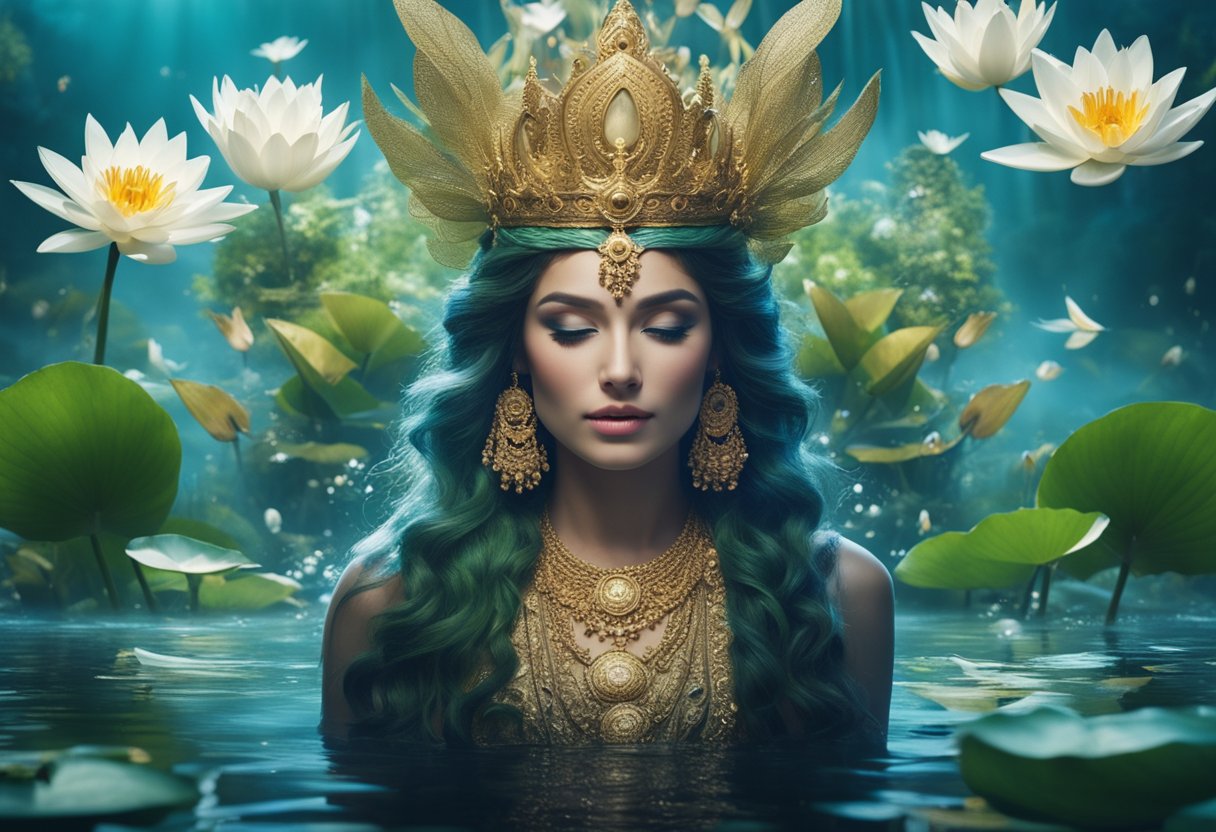
Our fascination with the mythology of Irish rivers and their deities has been captured in myriad forms of art and literature, permeating poetry, prose, and visual media. These creative expressions not only celebrate but also preserve the essence of Celtic myths and beliefs.
Celtic Symbolism and Imagery
Celtic symbolism and imagery often convey a deep connection with nature, which extends to their portrayal of rivers and the associated deities. The swirling patterns and intricate knotwork seen in Celtic art evoke the flow and power of water. They are often used to represent life’s continuity, a theme apparent in the portrayal of Irish river deities who embody the life-sustaining attributes of water. For instance, pieces of Irish jewellery might depict Sionann, the river Shannon’s namesake, and her story, wrapped in symbolism, reflecting both wisdom and tragedy.
Legends Preserved in Poetry and Prose
In literature, the legends of Irish mythology are often recounted with rich language that captures the rivers’ rhythm. The tale of Boann, the goddess of the River Boyne, is woven into poetry that mirrors the river’s journey through the landscape. The sagas of gods and goddesses continue to be an integral part of our cultural tapestry through the verses of poems or narratives in prose. These stories, where Sionann seeks wisdom at Connla’s Well, are preserved in the annals of Irish literature, such as those found at Connolly Cove, reflecting our enduring quest for knowledge and the tragic consequences of lust for forbidden wisdom.
Otherworldly Realms and Supernatural Beings
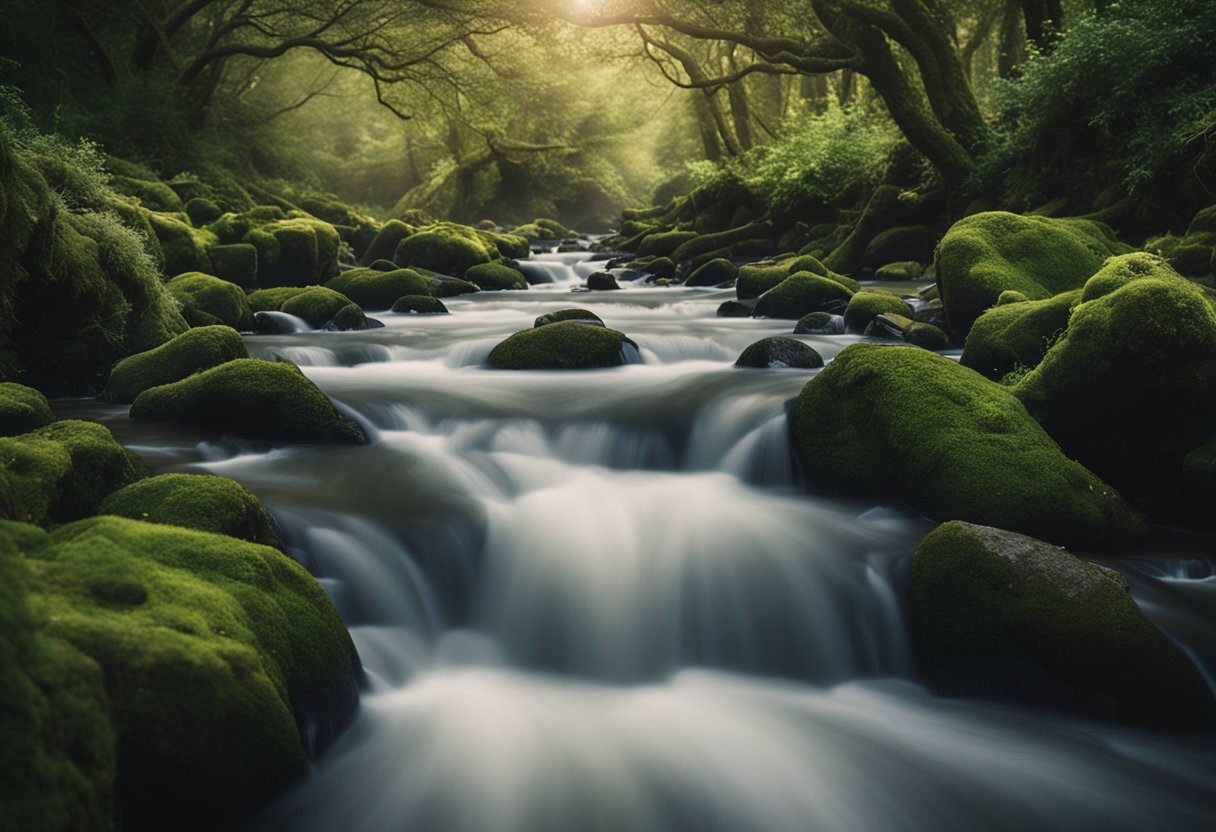
Within the rich tapestry of Irish mythology, rivers often serve as liminal spaces, marking the thresholds to Otherworldly realms teeming with supernatural beings and ancient deities. Here, we explore the enigmatic portals and illustrious entities within and alongside these mystical waters.
Otherworld Depictions and Access Points
The Otherworld is often portrayed as a parallel realm where supernatural entities and gods of the pantheon preside. This ethereal plane is accessible through various liminal locations, such as rivers, which are believed to be gateways. For instance, the River Boyne is associated with the wellspring of knowledge and its connection to the goddess Boann. Boann was linked to the miraculous Otherworld, as her waters flow from the tomes of wisdom and poetry. The River Shannon is said to be the dwelling of the river goddess Sionann, granddaughter of Lír, the sea god. At these aquatic intersections, one might cross into realms where the Tuatha Dé Danann, a tribe of divine beings in Irish mythology, hold court and interact with the mortal world.
Banshee, Sidhe, and Enchanted Creatures
The Banshee and the Sidhe (pronounced ‘shee’) hold significant roles among the spectrum of Otherworldly beings in Irish folklore. With her unearthly wail, the Banshee is a harbinger of death, often connected to specific families and seen by the water’s edge. Her lament is not intended to harm but to warn of an impending loss within the household; she watches. The Sidhe, also known as the Aos Sí, are a powerful, spiritual race regarded as the remnants of the Tuatha Dé Danann. They are considered the guardians of the natural world, dwelling in magical side mounds, which can be entrances to the enchanted Otherworld. Irish rivers, lush with myth and otherness, are said to weave through our realm and these hidden places, bridging the divide between the mortal and the supernatural.
Festivals, Folklore, and Seasonal Rites
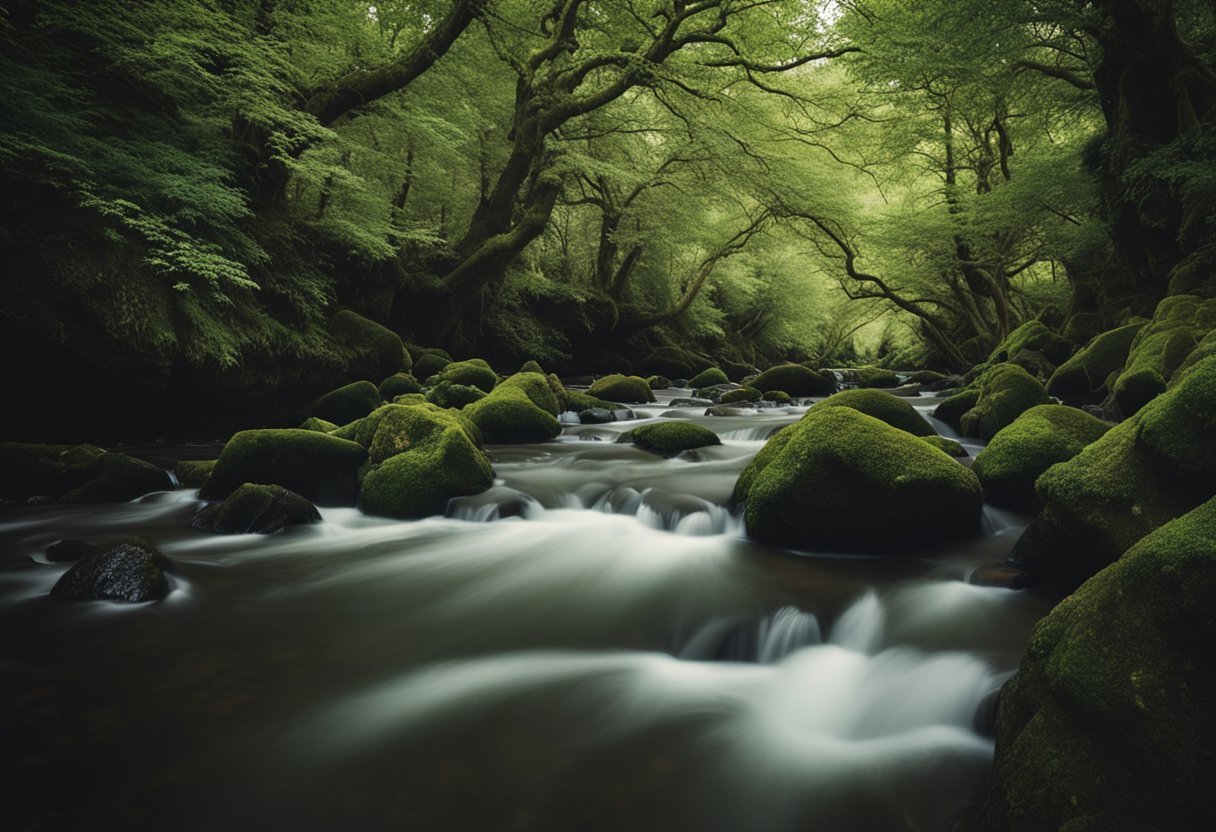
In Ireland, intricate webs of folklore and mythology are interwoven with seasonal rites centred around key festivals. These festivals reflect ancient beliefs and highlight the reverence for natural cycles and deities, particularly those of waterways, which were often seen as gateways to other worlds.
Samhain, Imbolc, Bealtaine, and Lughnasadh
- Samhain: Marking the end of the harvest season, Samhain is a time when the veil between worlds is thin, allowing spirits to pass through. It is a period steeped in supernatural lore and where the goddess Tailtiu is honoured for her maternal sacrifices.
- Imbolc: Celebrated at the beginning of February, it heralds the start of spring. Traditionally seen as a purification festival, it renews our bond with nature, as rivers and wells are often visited and blessed during this time.
- Bealtaine: Falling at the start of May, Bealtaine is a festival of fire and fertility, exemplifying growth and love. Bonfires light up as communities gather, attention is paid to the life-giving properties of rivers, and customs are performed to ensure prosperity.
- Lughnasadh: Named after the god Lugh, it marks the time for the first harvests. Festivities include athletic contests and giving thanks for the bounties provided by the rivers and the land.
Folk Tales and Community Customs
Each river in Ireland is enveloped in folk tales that depict the merging of the natural and supernatural worlds. These bodies of water are overseen by deities integral to community customs, whether by sharing stories or performing rites along their banks to ensure auspicious seasons. Our cultural tapestry is rich with narratives and various beliefs that keep the essence of these traditions alive through the ages.
Legendary Kings and Sacred Sovereignty
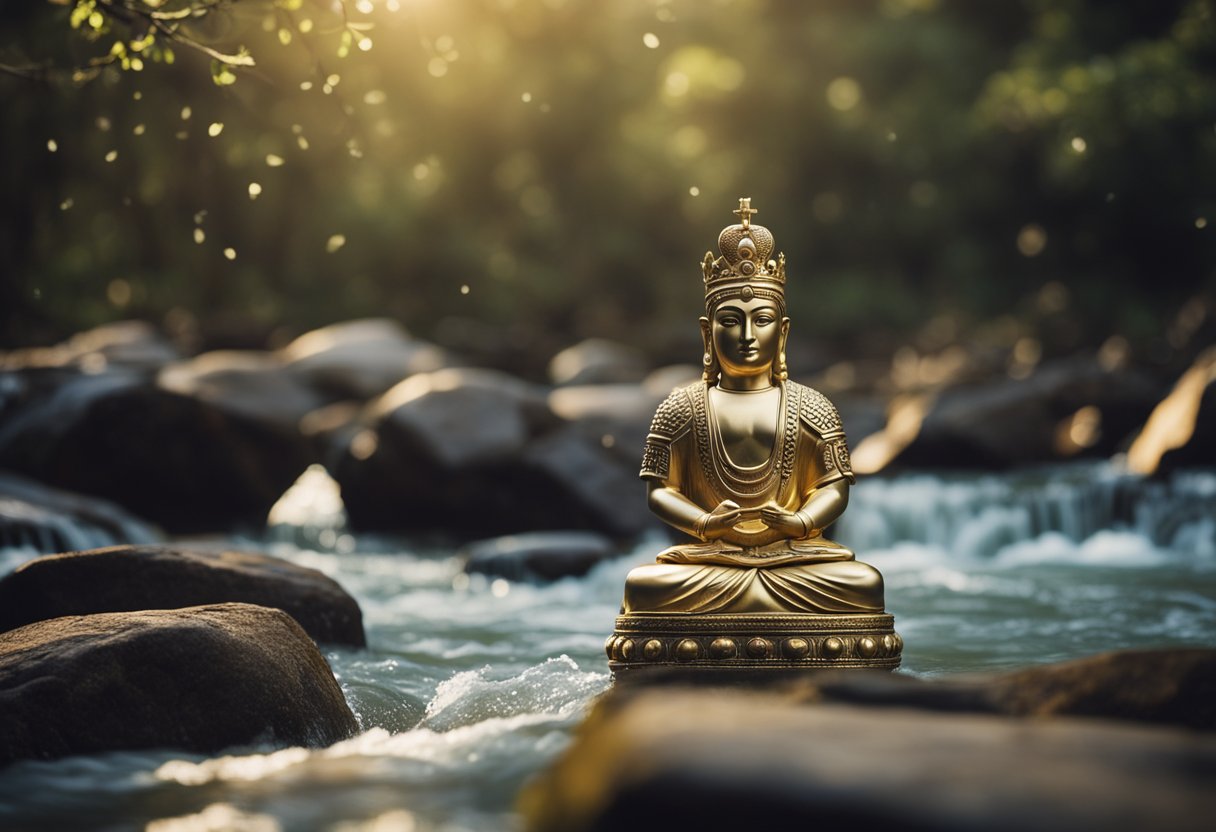
In the rich tapestry of Irish mythology, rivers were not just bodies of water but also the embodiment of divine presence, often linked to the sovereignty of the land and its rulers. The legendary kings who reigned were believed to derive their authority from sacred rites and mystical affiliations with the land.
High Kingship and the Seat of Power at Tara
The ceremonial seat of power in ancient Ireland was at Tara, where the High Kings presided with political and spiritual authority. It was believed that the king’s rule was legitimized through a sacred marriage to the land, ensuring the prosperity and fertility of the kingdom. Among these monarchs was The Dagda, a god-like figure known for his control over life and death, who was said to possess a cauldron that never emptied, symbolising endless sustenance and sovereignty.
Mythical Leaders and Their Divine Rights
Figures like Nuada, the fabled leader of the Tuatha Dé Danann, exemplify the divine right of kings in Irish myth. With his silver hand, he epitomised the blend of human and supernatural aspects a king should embody, asserting his role as both man and deity. The qualities of a king were seen as endowed by divine powers, a consecration that set them apart as chosen leaders of their people. It was our ancestral belief that these divine rights were paramount to a leader’s ability to maintain sovereignty and the welfare of their nation.
Mythic Cycles and Historical Impact
In exploring the mythology of Irish rivers and their associated deities, we uncover a tapestry of creation tales and ancient legacies that have left an indelible mark on Ireland’s history.
Creation Tales and Ancestral Legacy
Tales from Ireland’s rich mythological traditions provide us with entertainment and insight into our ancestors’ worldview. Traditionally divided into four major cycles, Irish mythology often centres around fantastical elements and divine beings, with rivers personified as gods or sites of sacred happenings. Notably, the Mythological Cycle encapsulates a collection of narratives concerning the origin of all things and the genealogies of the people. These cycles recount the tales of ancient tribes such as the Milesians, the concluding wave of invaders in Irish legend who are seen as Ireland’s ancestral forebears.
The rivers woven into these tales are more than natural phenomena; they are sentient entities that play crucial roles in creation and history. They are believed to be manifestations of deities or to host divine interventions that shaped the land and its people. Our history, as narrated by these rivers, runs as deep as their waters, with each meander holding stories of triumph, conflict, and legend.
Celtic Influence on Modern-Day Ireland
Our ancient narratives, including those encapsulated within the Celtic myths, have impressed upon modern-day Ireland a cultural legacy reverberating in contemporary life. These stories have permeated our literature, art, and collective consciousness, shaping our national identity and understanding of ancient Ireland.
It’s undeniable that the mythological cycles, evoking the lives and exploits of the Tuatha Dé Danann and the subsequent rulership of the Milesians, help us trace the lineage of Celtic spirituality and its profound relationship with nature.
From the verdant riverbanks that cradle these tales to the urban sprawl where these rivers flow, we see the ripples of Celtic influences. Monuments christened in the names of these revered river deities, festivals that hark back to pagan customs centred around natural waterways, and the preservation of these legends in our oral and written traditions underscore the hist
orical impact of our mythic cycles. The mythology woven into the very currents of our rivers is a testament to Ireland’s vibrant historical tapestry. It serves as a cornerstone for the Celtic identity that still thrives today.
Frequently Asked Questions
This section addresses some of the most commonly asked questions about the mythology of Irish rivers and their deities, shedding light on the significant figures and myths that flow through Ireland’s cultural landscape.
Who are the prominent river deities in Irish mythology?
Irish mythology is rich with tales of powerful deities who rule over the waterways. One such figure is Boann, the goddess of the River Boyne, who is closely linked to knowledge and inspiration.
What are the significant rivers in Irish folklore associated with gods and goddesses?
Rivers like the Shannon and the Boyne are steeped in mythological significance. The River Shannon is associated with the goddess Sionann, while the River Boyne is linked to the goddess Boann.
Which deity is considered the goddess of water in Irish mythological tradition?
The deity often regarded as the goddess of water in Irish mythology is Boann. She holds profound importance and is seen as the mother of the Irish god Aengus, borne out of her affair with the Dagda.
What is the role of rivers in Celtic myths and legends?
Rivers in Celtic myths often serve as boundaries between worlds. They are sources of life, wisdom, and even the pathway to the otherworld, as illustrated by tales of river gods and goddesses imbuing waterways with sacred qualities.
Can you name Celtic goddesses connected with nature and waterways?
Certainly, goddesses like Boann and Sionann are central to Irish mythology’s connections with nature and the elements. Another goddess, Brigid, is associated with healing and fertility and has links to water and natural springs.
What myths surround the sacred rivers of Ireland?
The sacred rivers of Ireland come with many enchanting myths, one of which speaks of the Salmon of Knowledge from the River Boyne, who was pursued by the warrior Fionn mac Cumhaill. Eating the salmon bestowed all the world’s knowledge upon him.






